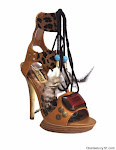
Slight problems with the fiber:We also found that the cancer rate among the working population in that area was disturbingly high.
At this point almost 60% of our net sales were in cotton. We had to go to our farmers and convince them to go organic, and subsidise them to do so. Then we had to go to the spinners to ask them to clean their machines between doing conventional lines and ours, and subsidise them, too. Finally, we had to ask our customers to pay a premium so we could afford to do this. But we made the decision we'd rather go out of business than continue to use conventional cotton.
We were lucky: our customers embraced the concept. And today we make tens of millions of dollars from organic cotton and haven't produced a stitch of non-organic since.
It's thanks to our policy on work/life balance. Patagonia is a familial environment: we provide childcare on site, have an organic cafe, and run yoga, aerobics and pilates classes at lunchtime. We have a very holistic approach to our business. When you work for us, you're working with friends and like-minded individuals.
No one has an office – it's a horizontal management policy where everyone's voice matters. We get around 500 to 1000 applications for every position advertised at Patagonia, but it's rare that a job comes up because people don't leave.
What is Patagonia's most important innovation?
In 1995 we initiated a programme called 1% for the Planet. Initially, this was just grassroots giving but we got sick of waiting for the government to fix the problems we saw around us. Consequently, over time we've donated more than $33m financially and in kind. We also do a lot of pro bono work through our own internal agencies.
As the company developed we realised we couldn't manage on our own so we split 1% from Patagonia, making it into a non-profit agency and inviting other companies to join us. As of last December we had 1,000 members worldwide. It's a huge part of why we're in business. We make profits so that we can give money to people who are fighting the good fight.
What can others learn from you?
We hope that we can inspire people that doing right on behalf of the environment can be profitable.
We try to look at a long-term picture. If you think about what you want your company to be 100 years from now rather than one year from now, it changes the way you make decisions. This outlook also affects the way we design – we don't necessarily consider transitory fashion trends, and have more of an industrial perspective.
Wal-Mart have recently approached us and asked how they can be more like us. As a small company, the effect we have on improving the environment is minimal, but think about what a giant company like Wal-Mart can do. If Wal-Mart makes even the smallest change, it has a big impact.


No comments:
Post a Comment